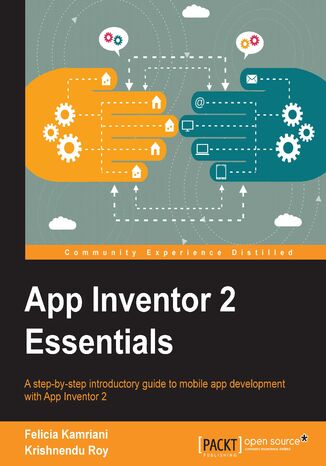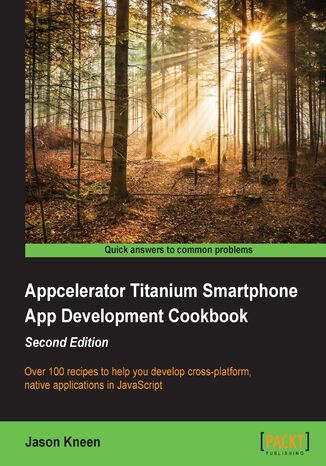Категорії
-
- Біткойн
- Ділова жінка
- Коучинг
- Контроль
- Електронний бізнес
- Економіка
- Фінанси
- Фондова біржа та інвестиції
- Особисті компетенції
- Комп'ютер в офісі
- Комунікація та переговори
- Малий бізнес
- Маркетинг
- Мотивація
- Мультимедійне навчання
- Нерухомість
- Переконання та НЛП
- Податки
- Соціальна політика
- Порадники
- Презентації
- Лідерство
- Зв'язки з громадськістю
- Звіти, аналізи
- Секрет
- Соціальні засоби комунікації
- Продаж
- Стартап
- Ваша кар'єра
- Управління
- Управління проектами
- Людські ресурси (HR)
-
- Architektura i wnętrza
- Безпека життєдіяльності
- Biznes i Ekonomia
- Будинок та сад
- Електронний бізнес
- Ekonomia i finanse
- Езотерика
- Фінанси
- Особисті фінанси
- Бізнес
- Фотографія
- Інформатика
- Відділ кадрів та оплата праці
- Для жінок
- Комп'ютери, Excel
- Бухгалтерія
- Культура та література
- Наукові та академічні
- Охорона навколишнього середовища
- Впливові
- Освіта
- Податки
- Подорожі
- Психологія
- Релігія
- Сільське господарство
- Ринок книг і преси
- Транспорт та спедиція
- Здоров'я та краса
-
- Офісні застосунки
- Бази даних
- Біоінформатика
- Бізнес ІТ
- CAD/CAM
- Digital Lifestyle
- DTP
- Електроніка
- Цифрова фотографія
- Комп'ютерна графіка
- Ігри
- Хакування
- Hardware
- IT w ekonomii
- Наукові пакети
- Шкільні підручники
- Основи комп'ютера
- Програмування
- Мобільне програмування
- Інтернет-сервери
- Комп'ютерні мережі
- Стартап
- Операційні системи
- Штучний інтелект
- Технологія для дітей
- Вебмайстерність
-
- Антології
- Балада
- Біографії та автобіографії
- Для дорослих
- Драми
- Журнали, щоденники, листи
- Епос, епопея
- Нарис
- Наукова фантастика та фантастика
- Фельєтони
- Художня література
- Гумор, сатира
- Інше
- Класичний
- Кримінальний роман
- Нехудожня література
- Художня література
- Mity i legendy
- Лауреати Нобелівської премії
- Новели
- Побутовий роман
- Okultyzm i magia
- Оповідання
- Спогади
- Подорожі
- Оповідна поезія
- Поезія
- Політика
- Науково-популярна
- Роман
- Історичний роман
- Проза
- Пригодницька
- Журналістика
- Роман-репортаж
- Romans i literatura obyczajowa
- Сенсація
- Трилер, жах
- Інтерв'ю та спогади
-
- Археологія
- Bibliotekoznawstwo
- Кінознавство / Теорія кіно
- Філологія
- Польська філологія
- Філософія
- Finanse i bankowość
- Географія
- Економіка
- Торгівля. Світова економіка
- Історія та археологія
- Історія мистецтва і архітектури
- Культурологія
- Мовознавство
- літературні студії
- Логістика
- Математика
- Ліки
- Гуманітарні науки
- Педагогіка
- Навчальні засоби
- Науково-популярна
- Інше
- Психологія
- Соціологія
- Театральні студії
- Богослов’я
- Економічні теорії та науки
- Transport i spedycja
- Фізичне виховання
- Zarządzanie i marketing
-
- Безпека життєдіяльності
- Історія
- Дорожній кодекс. Водійські права
- Юридичні науки
- Охорона здоров'я
- Загальне, компендіум
- Академічні підручники
- Інше
- Закон про будівництво і житло
- Цивільне право
- Фінансове право
- Господарське право
- Господарське та комерційне право
- Кримінальний закон
- Кримінальне право. Кримінальні злочини. Кримінологія
- Міжнародне право
- Міжнародне та іноземне право
- Закон про охорону здоров'я
- Закон про освіту
- Податкове право
- Трудове право та законодавство про соціальне забезпечення
- Громадське, конституційне та адміністративне право
- Кодекс про шлюб і сім'ю
- Аграрне право
- Соціальне право, трудове право
- Законодавство Євросоюзу
- Промисловість
- Сільське господарство та захист навколишнього середовища
- Словники та енциклопедії
- Державні закупівлі
- Управління
-
- Африка
- Альбоми
- Південна Америка
- Центральна та Північна Америка
- Австралія, Нова Зеландія, Океанія
- Австрія
- Азії
- Балкани
- Близький Схід
- Болгарія
- Китай
- Хорватія
- Чеська Республіка
- Данія
- Єгипет
- Естонія
- Європа
- Франція
- Гори
- Греція
- Іспанія
- Нідерланди
- Ісландія
- Литва
- Латвія
- Mapy, Plany miast, Atlasy
- Мініпутівники
- Німеччина
- Норвегія
- Активні подорожі
- Польща
- Португалія
- Інше
- Przewodniki po hotelach i restauracjach
- Росія
- Румунія
- Словаччина
- Словенія
- Швейцарія
- Швеція
- Світ
- Туреччина
- Україна
- Угорщина
- Велика Британія
- Італія
-
- Філософія життя
- Kompetencje psychospołeczne
- Міжособистісне спілкування
- Mindfulness
- Загальне
- Переконання та НЛП
- Академічна психологія
- Психологія душі та розуму
- Психологія праці
- Relacje i związki
- Батьківство та дитяча психологія
- Вирішення проблем
- Інтелектуальний розвиток
- Секрет
- Сексуальність
- Спокушання
- Зовнішній вигляд та імідж
- Філософія життя
-
- Біткойн
- Ділова жінка
- Коучинг
- Контроль
- Електронний бізнес
- Економіка
- Фінанси
- Фондова біржа та інвестиції
- Особисті компетенції
- Комунікація та переговори
- Малий бізнес
- Маркетинг
- Мотивація
- Нерухомість
- Переконання та НЛП
- Податки
- Соціальна політика
- Порадники
- Презентації
- Лідерство
- Зв'язки з громадськістю
- Секрет
- Соціальні засоби комунікації
- Продаж
- Стартап
- Ваша кар'єра
- Управління
- Управління проектами
- Людські ресурси (HR)
-
- Антології
- Балада
- Біографії та автобіографії
- Для дорослих
- Драми
- Журнали, щоденники, листи
- Епос, епопея
- Нарис
- Наукова фантастика та фантастика
- Фельєтони
- Художня література
- Гумор, сатира
- Інше
- Класичний
- Кримінальний роман
- Нехудожня література
- Художня література
- Mity i legendy
- Лауреати Нобелівської премії
- Новели
- Побутовий роман
- Okultyzm i magia
- Оповідання
- Спогади
- Подорожі
- Поезія
- Політика
- Науково-популярна
- Роман
- Історичний роман
- Проза
- Пригодницька
- Журналістика
- Роман-репортаж
- Romans i literatura obyczajowa
- Сенсація
- Трилер, жах
- Інтерв'ю та спогади
-
- Філософія життя
- Міжособистісне спілкування
- Mindfulness
- Загальне
- Переконання та НЛП
- Академічна психологія
- Психологія душі та розуму
- Психологія праці
- Relacje i związki
- Батьківство та дитяча психологія
- Вирішення проблем
- Інтелектуальний розвиток
- Секрет
- Сексуальність
- Спокушання
- Зовнішній вигляд та імідж
- Філософія життя
Apokryficzność i ekfrastyczność jako komplementarne poetyki intertekstualne
We wszystkich przywołanych w książce tekstach da się zaobserwował podstawową łączącą je kwestię (można ją dostrzec także w innych utworach mierzących się z kanonem): każdy z nich dotyczy szeroko pojmowanej utraty "niewinnego spojrzenia" na wizualne pre-teksty, sposoby myślenia, których są wytworami, kanoniczne interpretacje, a także na idealizowanie i fetyszyzowanie samych obrazów, ich twórców oraz bohaterów. Apokryficzne prze-pisywanie dzieł sztuki - co jedynie pozornie oczywiste - ułatwia postrzeganie ich jako przedmiotów nie tylko estetycznych, ale także (a może nawet przede wszystkim) jako przedmiotów nacechowanych etycznie. Z Zakończenia
Apokryfy judaistyczno-chrześcijańskie
Ze wstępu: We dwóch czy trzech stuleciach, kończących erę starożytną, i w kilku, rozpoczynających nową, w całym, rzec można, owoczesnym świecie dziejowym, powstawał i rozpowszechniał się pewien rodzaj utworów, ważnych zarówno dla swej treści, jak i pochodzenia. Treść jak wszystkich celniejszych pomników piśmiennych w dziejach powszechnych, była ściśle związaną z biegiem wypadków wytwarzających te dzieje, przedstawiała, grupowała i objaśniała fakty rzeczywiste, lub za rzeczywiste uchodzące i podawane; wyprowadzała z rozbieranych faktów wnioski, wyrabiała o tych faktach, z danego punktu widzenia, pojęcia właściwe, zaprawiała na nich mniej przygotowane umysły do wydania stosownego do danych celów sądu o rzeczy. Pochodzenie było zawsze ukryte, zagadkowe, tajemnicze. Właśnie, wskutek takiego pochodzenia, dla tych utworów powstała z greckiego języka nazwa apokryfy, pod którą, w piśmiennictwie powszechnym, są one wyłącznie znane.
Apologetyka po prostu. Jak pomóc poszukującym i sceptykom w odnalezieniu wiary
Objawienie jest niezmienne, ponieważ odsłania wieczne prawdy dotyczące natury człowieka, wszechświata, a nade wszystko Boga. Zmienia się jednak kontekst intelektualny, społeczny i kulturowy, w którym rozbrzmiewa Słowo Boga. Dlatego dla zrozumienia i głoszenia prawdy chrześcijańskiej istnieje potrzeba wyrażania jej na nowo, nadając niezmiennej istocie współczesną formę. Niniejsza seria jest zbiorem książek kompetentnie prezentujących właściwe rozumienie i uzasadnienie wiary. Powstaje ona z myślą o każdym, kto chce poznać racjonalnie argumenty za prawdziwością objawienia. Serię opracowują: Wydawnictwo W drodze, które od 1973 roku wydaje publikacje, pomagając łączyć wiarę z codziennością. Fundacja Prodoteo, której misją jest propagowanie stylu życia opartego na wartościach chrześcijańskich, m.in. poprzez popularyzację wiedzy z zakresu apologetyki chrześcijańskiej i znajomości Pisma Świętego. Alister McGrath uważa, że najlepszą taktyką obronną wiary chrześcijańskiej jest jej objaśnianie. Historia obfituje w wielkich i przekonujących apologetów. Jednak wyzwania, jakie stawia współczesny świat i jego ideologie z nowym ateizmem na czele, wymagają świeżego i elastycznego podejścia do apologetyki. Nawiązując do słynnej książki C.S. Lewisa Chrześcijaństwo po prostu, McGrath uczy czytelnika metod dzielenia się wiarą przemawiających nie tylko do umysłu, lecz także do serca i wyobraźni.
Apologetyka Radości. C. S. Lewisa argument z Pragnienia na rzecz istnienia Boga
Wszystkie kultury na przestrzeni dziejów cechowała tendencja, by szukać czegoś, co wykracza poza widzialny, materialny świat. Według C.S. Lewisa wszyscy posiadamy pragnienie transcendencji, którego nasza rzeczywistość nigdy nie zaspokoi. Skąd bierze się w człowieku taka tęsknota i co ona oznacza? Choć Lewis nigdy nie użył zwrotu "argument z Pragnienia", to argument ten wypełnia strony wielu jego cenionych prac. W swej pasjonującej książce Joe Puckett Jr. analizuje i rozszerza rozumowanie Lewisa. Mierzy się także z krytykami religii, takimi jak Nietzsche, Freud, ale też Dawkins i inni współcześni myśliciele, którzy postrzegają Boga jedynie jako projekcję ludzkiej potrzeby bezpieczeństwa lub uznają pragnienie transcendencji za wyłącznie wytwór czysto naturalnych przyczyn. Opierając się na argumentacji Lewisa, Puckett dowodzi, że wiara w coś poza tym światem, co jest źródłem i wypełnieniem naszej tęsknoty, jest racjonalna. Według Lewisa to właśnie poszukiwanie obiektu Radości może doprowadzić nas do Boga. Mamy to do czynienia z wyjątkowym opracowaniem akademickim, jedyną znaną mi książką w pełni poświęconą najbardziej interesującemu argumentowi na świecie. Napisana jest w sposób jasny i przekonujący. Polecam ją całym sercem. - Peter Kreeft, autor książki "Krytyka relatywizmu moralnego. Wywiad z pewnym absolutystą" Joe Puckett w "Apologetyce Radości" pokazuje długą i bogatą historię namysłu nad problemem wiary oraz istnienia Boga. Najwyraźniej jest to problem przypisany do naszej ludzkiej kondycji, dlatego książka ta jest dla nas i o nas. Jest ona dla nas, ponieważ zaprasza, by we własnym życiu uczciwie i odważnie poszukać doświadczeń, w których przebłyskuje pragnienie transcendencji. Nic nie gwarantuje, że je znajdziemy, ale nie znajdziemy go na pewno, jeśli nie spróbujemy. Jest też i o nas. Przedstawia przemiany kultury, choćby oddzielenie faktów i wartości, nauki od religii, piękna od prawdy i dobra, które sprawiają, że trudniej nam pragnienie transcendencji w sobie identyfikować i dostrzegać w świecie jej "echa". - dr hab. Agnieszka Lekka-Kowalik, prof. KUL Spośród różnych argumentów na istnienie Boga, które pojawiły się na przestrzeni dziejów, najbardziej zaniedbanym i najmniej znanym jest argument z ludzkich pragnień [...]. Puckett przedstawia istotne składniki tego argumentu, odwołując się do głównych jego propagatorów oraz krytyków. Czyni to z żarliwością i biegłością, co korzystnie wpływa na ponowne przedstawienie w naszych czasach tego ważnego argumentu na istnienie Boga. - Michael R. Young redaktor "The Journal of Faith and the Academy" C.S. Lewis [...] przekonuje, że najlepsze wyjaśnienie ludzkiego doświadczenia radości i współwystępującego z nim uczucia tęsknoty za tym, co transcendentne i wieczne, znajdziemy w judeo-chrześcijańskiej wizji rzeczywistości [...]. Jak dotąd ten interesujący argument Lewisa był pomijany przez apologetów starających się wykazać prawdziwość teizmu chrześcijańskiego. Uważam jednak, że argument z Pragnienia zajmuje należne mu miejsce w całościowej argumentacji na rzecz teizmu i jestem szczęśliwy, że "Apologetyka Radości"Joego Pucketta wypełnia tę lukę, prezentując ten argument oraz odpowiadając jego krytykom. "Apologetyka Radości", o ile wiem, jest pierwszym książkowym opracowaniem tego argumentu Lewisa i jestem szczęśliwy, że mogę polecić tę lekturę. - Mark Linville autor w "The Blackwell Companion to Natural Theology" i współredaktor oraz współautor pracy zbiorowej "Philosophy and the Christian Worldview" Joe Puckett Jr. pełni posługę lektora w 16th Ave. Church of Christ w Sterling, Illinois. Jest absolwentem Faulkner University. Obecnie na Wydziale Nauk Humanistycznych w Salve Regina University pracuje nad doktoratem poświęconym filozofii umysłu. C. S. Lewis. Rozum i Wiara "Wierzę w chrześcijaństwo tak samo jak we wschodzące słońce - nie tylko dlatego, że je widzę, ale także dlatego, iż dzięki niemu widzę wszystko inne." (C.S. Lewis) Seria wydawnicza "C. S. Lewis. Rozum i Wiara" to zbiór publikacji dotyczących twórczości i życia Clive'a Staplesa Lewisa, uznawanego za największego współczesnego chrześcijańskiego apologetę. Prezentuje intelektualne walory teizmu oraz argumentację na rzecz tezy o racjonalności przekonań teistycznych, a w szczególności chrześcijaństwa. Choć Lewis zmarł w roku 1963, jego twórczość jest wciąż aktualna. Do jego argumentów i analiz dotyczących moralności oraz społeczeństwa wciąż odwołują się zawodowi filozofowie i teologowie, a także liczni przedstawiciele obu stron filozoficzno-teologicznego sporu ateizmu z teizmem. Na język polski zostało już przełożone wiele prac C.S. Lewisa, które cieszą się niesłabnącą popularnością. Wciąż jednak brakuje opracowań biograficznych i krytycznych oraz pogłębionych analiz jego poglądów. Seria "C. S. Lewis. Rozum i Wiara" ma wypełnić tę lukę. Publikowane w niej teksty odznaczają się naukową wnikliwością, a jednocześnie są przystępne dla szerokiego grona czytelników, tak jak twórczość samego C.S. Lewisa, który przekonywał, że dzięki chrześcijaństwu wszystko inne nabiera sensu.
Czy chrześcijanie potrzebują dzisiaj apologii? Amerykański biskup, filozof i teolog, Robert Barron wskazuje na pilną potrzebę obrony chrześcijaństwa. Chodzi o stworzenie przekonującej apologetyki dla podstawowej narracji wiary. Takiego zadania podjął się ks. Przemysław Artemiuk.
Dzieło nie jest traktatem filozoficznym w zwykłym rozumieniu tego słowa, czy nawet w tym znaczeniu, w jakim traktatami filozoficznymi są inne dialogi Platona (np. Uczta). Ani sam Sokrates, ani Platon ustami Sokratesa nie roztrząsają tu żadnych szczegółowych kwestii ontologicznych lub kosmologicznych, które zaprzątały wtedy uwagę greckich filozofów. W argumentacji Sokratesa (zwłaszcza w jego rozmowie z Meletosem) można nawet dopatrzyć się błędów logicznych. Sokrates np. niesłusznie twierdzi, że nikt nie może świadomie dążyć do deprawowania innej osoby, ponieważ ta w końcu zwróciłaby się przeciwko niemu. I w historii starożytnej i współcześnie można łatwo znaleźć przykłady osób, które zdeprawowane szkodziły nie osobie odpowiedzialnej za jej zepsucie moralne, lecz innym. Sokrates tylko pozornie zbija również drugi punkt oskarżenia, twierdząc, że nie można go oskarżać jednocześnie o bezbożność i wprowadzanie nowych duchów. W rzeczywistości Anytos, Meletos i Lykon nie oskarżali go o ateizm, lecz o to, że nie uznaje bogów, których państwo uznaje, czyli religii państwowej. Była to niewątpliwie prawda. Jak powiedziano, religijność Sokratesa była bardzo głęboka, ale też całkiem innej ogólniejszej i bardziej refleksyjnej natury, niż u zwykłych Ateńczyków. Jest też prawdą, że Sokrates nie był zwolennikiem ustroju demokratycznego. Nie mógł zgodzić się z branym w Atenach za pewnik przekonaniem, że obywatele w swojej większości reprezentują mądrość. (za Wikipedią).
Aporie sobości. Problem tożsamości osobowej w powieściach Wiesława Myśliwskiego
Jest to książka „pytań”. Jej pytajny charakter jest czytelny od pierwszych stron i jeśli użyć „świetlnej” metafory rzec można, że to światło pytania prowadzi uczonego w gąszcz świata przedstawionego twórczości autora Nagiego sadu. Cenne przy tym jest, że nie wdając się w rozważania natury literaturoznawczej wchodzi on od razu w istotę filozoficznych zagadnień. (…) Autor stawia przede wszystkim pytania o tożsamość osoby ludzkiej, tworzenia się jej, jej statusu i ostatecznego powołania. Wydobywa te kwestie z materii świata przedstawianego w sposób nadzwyczaj sprawny warsztatowo, dając popis kunsztu analitycznego oraz interpretacyjnego, (…) pokazuje wyjątkową umiejętność przekładu materii literackiej na problematykę filozoficzną, przy czym znakomicie stosuje kategorie filozoficzne do analiz świata przedstawionego, nie wprowadza zbędnej terminologii i aparatu pojęciowego, nie narzuca arbitralnie pojęć, lecz stara się niejako wyprowadzić je z analizowanej materii świata literackiego. Z recenzji prof. dr hab. Jana Krasickiego
Jeden człowiek przeciw barbarzyńcom! Opowieść o Ammianie Marcellinusie, który chciał ocalić Rzym dla potomnych… Imperium rzymskie, IV wiek. Po śmierci Konstantyna Wielkiego pokój w imperium nie trwa długo. W Konstantynopolu pojawia się młody Grek z Antiochii – Ammian Marcellinus, który wypełniając przyrzeczenia dane cesarzowi przez ojca, wstępuje do armii. Ammian jest sprawnym obserwatorem i pragnie opisać dzieje Rzymu od jego początków aż po czasy sobie współczesne. Staje się świadkiem szaleństw politycznych i namiętności religijnych, zaciekłej walki między katolikami i arianami, potężnej wojny Rzymu i Persji. Na jego oczach rozgrywa się straszliwa bitwa z Gotami pod Adrianopolem w 378 roku, która zachwiała imperium. Jako historyk i kronikarz upadającej potęgi kończy na niej swoje „Dzieje Rzymu”. Bohater spotyka wielkie postaci historyczne, m.in. cesarzy – Konstancjusza II, Juliana Apostatę, Teodozjusza Wielkiego, ale też pogańskiego filozofa Libaniosa, zapomnianego geniusza biskupa Wulfilę, który przełożył Biblię na język gocki, a także wielkich Kościoła: Grzegorza z Nazjanzu oraz Ambrożego z Mediolanu. Powieść jest epickim freskiem z IV wieku, z czasów, kiedy dokonywała się ogromna przemiana cywilizacyjna, która zachwiała Cesarstwem Rzymskim. To także pasjonujące losy człowieka, który za wszelką cenę chciał tę cywilizację ocalić.
Apostolstwo Chorych powstało w Niderlandach w 1925 r. Podstawowym celem tej wspólnoty, istniejącej także w Polsce, jest odkrywanie duchowo-religijnego sensu życia naznaczonego chorobą i cierpieniem. Monografia jest pierwszym całościowym opracowaniem problematyki Apostolstwa Chorych, a szczególnie historii wspólnoty oraz teologii leżącej u jej podstaw. Została przygotowana w oparciu o źródła niderlandzkie, polskie i francuskie. Udowadnia, że rozpoznanie sensu cierpienia, choć następuje nieraz po dłuższej wewnętrznej walce, ma dla człowieka chorego wielkie znaczenie: przestaje być jedynie biernym odbiorcą opieki, a staje się aktywnym duchowo podmiotem. Postawa taka nie oznacza cierpiętnictwa ani odstąpienia od szukania pomocy medycznej. Stanowi natomiast duchowo-moralną barierę wobec eutanazji.
Apostołowie słowiańscy święci Cyryl i Metody
śś. Cyryl i Metody: Słynęli w Grecji z pobożności i nauki bracia Metody i Konstanty, synowie urzędnika cesarskiego, greka Leona. Pochodzili oni z Tessaloniki, miasta, w którym od czasu rozproszenia Słowian przez Awarów siedlili się tak gęsto Słowianie, że język ich stał się tam powszechnym i wszyscy Tessalończycy czysto po słowiańsku mówili. Przyjęli też Słowianie tessalońscy wcześnie chrześcijaństwo i taką w wierze odznaczali się gorliwością, że Tessalonika otrzymała od papieży zaszczytny przydomek prawowiernej i już w VIII wieku wysłała apostołów do Bułgarów i dalej na północ...
Jerzy Liebert Druga ojczyzna Apostrofa Tam, gdzie niebo półkręgiem płaszcz na ziemię zsuwa Jak powiekę różową od łez, Ranek pąsy na chmurach leciutkich nakłuwa, W twarze błękit nam ciska jak bez. Blade palce na ustach Twych błyszczą jak wino, W pocałunku powietrznym drży dłoń, Bądź zdrowa, miła moja, nim z gwiazdami spłyną Łzy gorące, jak świt, na Twą skroń. Na twarde, męskie serce składasz dzisiaj ręce Jak wianuszek z konwalii i róż, Pewniejsze to i trwalsze nad... Jerzy Liebert Ur. ur. 24 lipca 1904 w Częstochowie Zm. zm. 19 czerwca 1931 w Warszawie Najważniejsze dzieła: tomiki poezji Druga ojczyzna (1925), Gusła (1930), Kołysanka jodłowa (1932); zbiór korespondencji Listy do Agnieszki Poezja Lieberta stanowi zapis jego poszukiwań metafizycznych. Tematyka religijno-filozoficzna przejawia się już w debiutanckim wierszu Zmartwychwstanie. Modlitwa młodego poety, opublikowanym w chrześcijańskim Czynie. Związany ze środowiskiem Skamandrytów, przyjaźnił się Liebert z Jarosławem Iwaszkiewiczem, publikował w Skamandrze i Wiadomościach literackich. Ważną relacją była dla poety przyjaźń z Bronisławą Wajngold, która przyjęła chrzest jako Agnieszka, a następnie wstąpiła do zakonu franciszkanek. Za jej przyczyną Liebert znalazł się w kręgu inteligencji katolickiej, związanym z ośrodkiem zakonnym w podwarszawskich Laskach, czytał filozofów chrześcijańskich i brał udział w dyskusjach na temat tych lektur. Dziennikiem tych przeżyć są Listy do Agnieszki. Studiował polonistykę na Wydziale Filozofii Uniwersytetu Warszawskiego, ale ukończenie studiów uniemożliwiła mu gruźlica i kłopoty materialne. Dzięki wsparciu przyjaciół wyjeżdżał na kuracje do Worochty. Zmarł w Warszawie w wieku 27 lat. Kupując książkę wspierasz fundację Nowoczesna Polska, która propaguje ideę wolnej kultury. Wolne Lektury to biblioteka internetowa, rozwijana pod patronatem Ministerstwa Edukacji Narodowej. W jej zbiorach znajduje się kilka tysięcy utworów, w tym wiele lektur szkolnych zalecanych do użytku przez MEN, które trafiły już do domeny publicznej. Wszystkie dzieła są odpowiednio opracowane - opatrzone przypisami oraz motywami.
Apostrofa Dałem ci żywot mój, to nie wiele! Żywotów takich tysiąc dziś przepada, Dałem ci miłość mą, o aniele! Lecz cóż z miłości, co jak łez kaskada Kołysze ucho twe w takt i pieści, A w strofie życia piorunów nie mieści?... Mamże jak Narcyz stać, wdzięczny sobie I roznamiętniać się odbitym cieniem? Grobu niesławę czcić na twym grobie, Schlebiać ci tylko łzami i cierpieniem, I gdy ci mieczów brak, nieść ci róże, Co na Cezarów więdnieją purpurze? O, precz mi z drogi tej! ja nie mogę Płatnych służalców zwykłą iść koleją, Ja widzę hańby znak, w oczach trwogę, Ręce, co światu pogrozić nie śmieją; Więc rzucam gniewu krzyk i wściekłości, I grobu twego znieważam świętości! Ja dla męczarni twych wzgardę czuję, Bo ty frymarczysz krwią twą, Messalino! Wierna przeszłości tej, co cię truje, Gdy pokolenia całe bez czci giną, Pod tryumfalny wóz zawleczona, Gotowaś upaść liktorom w ramiona. Spartaków wprzódy syn, niż twój czciciel, Rachunku żądam od ciebie, przeklęta, Przeszłości krwawych krzywd smutny mściciel Pytam: gdzie? w bolach ludzkości poczęta A przekazana myśl jednej tobie, Arystodemów ty wdowo w żałobie! [...]Adam AsnykUr. 11 listopada 1838 r. w Kaliszu Zm. 2 sierpnia 1897 r. w Krakowie Najważniejsze dzieła: Pijąc Falerno, Piosnka pijacka, Między nami nic nie było, Gdybym był młodszy, Jednego serca..., Nad głębiami (cykl sonetów), Daremne żale, Do młodych Poeta, epigon romantyzmu tworzący w epoce pozytywizmu i Młodej Polski, autor dramatów i opowiadań. Syn powstańca 1831 r., zesłańca. Podejmował różne kierunki studiów (rolnicze, medyczne, nauki społeczne), prowadząc działalność spiskową. Był więziony w Cytadeli (1860). W powstaniu styczniowym zaangażowany po stronie ?czerwonych?, był członkiem rządu wrześniowego. Po upadku zrywu uzyskał stopień dra filozofii w Heidelbergu (1866), zaczął wydawać pierwsze utwory w prasie lwowskiej (1864-65). W 1870 r. osiadł w Krakowie, brał czynny udział w życiu samorządowym, był posłem na Sejm Krajowy z ramienia demokratów (1889). Amator Tatr, wiele podróżował (Włochy, Tunezja, Algieria, Cejlon, Indie). Pochowany na Skałce. Kupując książkę wspierasz fundację Nowoczesna Polska, która propaguje ideę wolnej kultury. Wolne Lektury to biblioteka internetowa, rozwijana pod patronatem Ministerstwa Edukacji Narodowej. W jej zbiorach znajduje się kilka tysięcy utworów, w tym wiele lektur szkolnych zalecanych do użytku przez MEN, które trafiły już do domeny publicznej. Wszystkie dzieła są odpowiednio opracowane - opatrzone przypisami oraz motywami.
Apoteoza Gdy ból milionów długi i przewlekły Twoją pierś młodą obrał za swe gniazdo, Żłobiąc na czole cierniem wieszcza znamię -- Gdy oczy tłumów mgły zwątpień powlekły, W próżnym pościgu za nadziei gwiazdą I gdy opadło w dół bezsilne ramię -- Ty, dróg szukając błędnym życia rzekom, Z którymi serce płomienne się wiodło, I skostniałego świata rwąc wędzidła, -- Rzuciłeś wtedy wszystkim świata wiekom To wulkaniczne, niestygnące godło: Młodości, podaj mi skrzydła! I usłyszały młode pokolenia Te słowa wiecznie młode i płomienne, Budzące w duszy Ikarowe loty, I Prometejów śmiałe wysilenia, I dni niepokój, i noce bezsenne, I wszystkie rannej młodości tęsknoty. [...]Franciszek NowickiUr. 29 stycznia 1864 w Krakowie Zm. 3 września 1932 w Zawoi Najważniejsze dzieła: Pieśni czasu (1904) Poeta okresu Młodej Polski. W czasie studiów na krakowskim uniwersytecie związany z radykalną Czytelnią Akademicką i czasopismem ?Ognisko?; działacz ruchu ludowego; socjalista, współzałożyciel PPSD, współpracował z pismem ?Naprzód. Był jednym z oskarżonych (obok m.in. Daszyńskiego) w tzw. procesie młodzieży w 1891 r.; został wydalony z UJ; dokończył studia na wydziale filozoficznym w Wiedniu. Przez 20 lat (1894-1924) był nauczycielem, zaś z zamiłowania taternikiem; do jego zasług zalicza się wytyczenie szlaku na Orlą Perć. W twórczości literackiej Nowickiego najbardziej charakterystyczne są motywy tatrzańskie oraz akcenty radykalnie lewicowego zaangażowania społecznego. Jest autorem przekładu Hermana i Doroty Goethego.Kupując książkę wspierasz fundację Nowoczesna Polska, która propaguje ideę wolnej kultury. Wolne Lektury to biblioteka internetowa, rozwijana pod patronatem Ministerstwa Edukacji Narodowej. W jej zbiorach znajduje się kilka tysięcy utworów, w tym wiele lektur szkolnych zalecanych do użytku przez MEN, które trafiły już do domeny publicznej. Wszystkie dzieła są odpowiednio opracowane - opatrzone przypisami oraz motywami.
Felicia Kamriani, Krishnendu Roy
App Inventor 2 will take you on a journey of mobile app development. We begin by introducing you to the functionalities of App Inventor and giving you an idea about the types of apps you can develop using it. We walk you through the technical set up so you can take advantage of the interactive development environment (live testing). You will get hands-on, practical experience building three different apps using tutorials. Along the way, you will learn computer science principles as well as tips to help you prepare for the creative process of building an app from scratch. By the end of the journey, you will learn how to package an app and deploy it to app markets. App Inventor 2 Essentials prepares you to amass a resource of skills, knowledge and experience to become a mobile app developer
Appcelerator Titanium is the leading method for creating native cross-platform apps. This book guides you from the initial stages with the language right through to the submission of your app to the marketplace/app store. Specially crafted examples cover the most common requirements of an app programmer. This book will be your companion as you progress with the language.Appcelerator Titanium Application Development by Example Beginner's Guide will guide you through the process of designing cross-platform apps using Titanium. It covers all areas of the language from installation through development to submission to the store. This book will take a hands-on approach in teaching you how to write cross-platform apps using Titanium, as well as exploring the new features of Titanium 3. Each chapter will show you how to overcome specific challenges using Titanium. You will learn how to design your apps using MVC principles and Alloy, use the cloud to your advantage, develop apps that work on tablets and phones, use the phone gadgets like the accelerometer, integrate social media, record usage using analytics, and monetise your app. All tasks from installation to deployment to the store are covered and backed by examples. The book will be your companion from your first steps with Titanium to successful live deployment.
Boydlee Pollentine, Jason Kneen, Jason Kneen
This book will take you through the process of building cross-platform, native UI applications for the mobile from scratch. You will learn how to develop apps, how to use GPS, cameras and photos and how to build socially connected apps. You will also learn how to package them for submission to the App Store and Google Play.This cookbook takes a pragmatic approach to creating applications in JavaScript from putting together basic UIs, to handling events and implementation of third party services such as Twitter, Facebook and Push notifications. The book shows you how to integrate datasources and server APIs, and how to use local databases. The topics covered will guide you to use Appcelerator Studio tools for all the mobile features such as Geolocation, Accelerometer, animation and more. You’ll also learn about Alloy, the Appcelerator MVC framework for rapid app development, and how to transfer data between applications using URLSchemes, enabling other developers to access and launch specific parts of your app.Finally, you will learn how to register developer accounts and publish your very own applications on the App Store and Google Play.
















